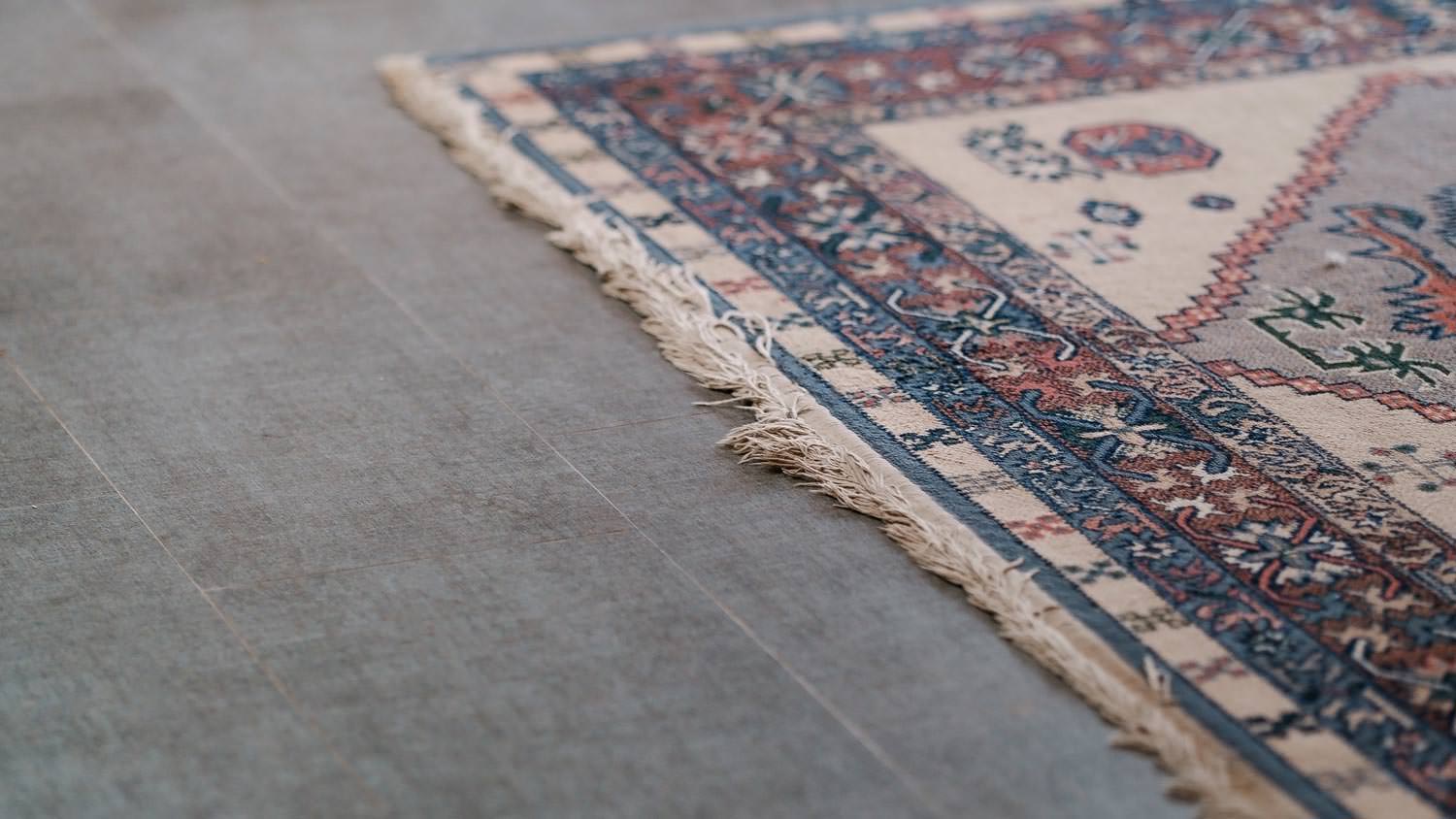
Discover the average professional rug cleaning cost, what impacts pricing, and how to save on your next cleaning. Get expert tips for homeowners.
A rug can make or break the aesthetic of a room


The Dude from “The Big Lebowski” was right when he said, “A rug really can tie a room together." Adding a rug is a small design change that can make a big impact on any room of your house.
However, the process of choosing a rug can be overwhelming since there are so many available options. To make your shopping experience easier, we’ve broken down some of the most common rug materials, as well as evaluated their pros and cons.
Wool rugs are a great way to add comfort and softness to your home. This rug material works well in dining rooms and living rooms because they repel water and stains. Plus, it’s soft enough to walk around barefoot.
Wool rugs are durable, which means they’ll last for a while, usually an average of 20 to 30 years. Keep in mind that your rug’s lifespan will vary based on how well you maintain it. If you have a handwoven rug, consider hiring a local rug cleaner to deep-clean your wool rug every few weeks.
Plus, wool rugs are mostly resistant to stains, dust, and water damage since they absorb most substances easily. Wool is also flame-resistant thanks to its insulating properties. Finally, wool can be dyed, so you’ll be able to choose from a long list of color options.
On the downside, wool rugs are not great for damp areas, such as mudrooms or patios, because they tend to hold in moisture. Wool rugs also have the potential to shed, although this usually lessens over time. Finally, one major drawback is that wool rugs can be more expensive than other options, averaging around $4 to $20 per square foot.

Silk rugs have a luxurious look, but they require more maintenance than options like wool and synthetic materials. However, since silk can absorb many colors, it can be dyed and woven into a wide variety of complex rug patterns.
Keep in mind that, over time, your silk rugs may begin to reveal footprints due to its delicate material, so you should avoid placing them in a high-traffic area like the living room or the kitchen. Homeowners should keep silk rugs out of direct sunlight to avoid fading.
If you spill on this type of rug, you should use a cleaner specifically made for silk rugs, or have your rug professionally cleaned. When vacuuming silk rugs, use the lowest vacuum setting to maintain your rug by keeping dirt and dust out of the rug fibers.
Synthetic rugs are composed of man-made materials, such as viscose, nylon, polyester, and olefin. These materials serve to imitate natural fibers, and this type of rug is often used in outdoor spaces, basements, and on boats.
Synthetic materials are great for outdoor rugs because they don’t fade when placed in direct sunlight. These rugs are easy to maintain because you can clean them by simply tossing them into the washing machine or hosing them down.
Synthetic rugs are an inexpensive alternative to more costly options, such as wool and silk. These rugs usually cost around $1 to $5 per square foot. It’s important to note that these rugs are harder to dye than cotton and silk rugs, so you may have limited color or pattern choices.

Cotton rugs are a popular option because they can be dyed any color, which means they’re available in tons of patterns. Many cotton rugs are even reversible, so homeowners can utilize both sides. Plus, they can be cleaned in the washing machine with no additional maintenance required.
Cotton rugs are less durable than other options—they tend to wear out faster than synthetic materials and wool. So, these rugs might not be the best choice for high-traffic areas, such as entryways, kitchens, hallways, and living rooms. They can also stain easily. Over time, cotton rugs can turn a yellow-brown color, which happens when the cells break down and release lignin, which is an important structural component of plant cell walls. Since they’re a natural product, cotton rugs typically cost $6 to $7 per square foot.
Seagrass is a flowering plant that grows in the water and is often used to insulate houses, create wave rugs and furniture, and thatch roofs.
Seagrass rugs are natural-fiber rugs and, since they’re very durable and water- and stain-resistant, they work well in mudrooms. They also won’t fade when placed in direct sunlight, so seagrass rugs are a solid choice for an outdoor rug.
One downside is that seagrass rugs have limited color options because they don’t dye well. If comfort is high on your priority list, you’ll probably want to go in a different direction, since seagrass rugs aren’t the softest material to step on in comparison to wool or cotton rugs.
Jute is another type of natural fiber that comes from a fibrous plant called jute, which grows in India and Bangladesh. The fiber is spun into coarse strands to create rugs.
This type of rug requires careful cleaning. When vacuuming, use a low setting to prevent the fibers from breaking. Jute rugs also are very quick to absorb stains, so they require immediate cleaning in the event of spills.
Jute rugs are static-free and absorbent, so there is a low risk for water-damage and stains. Plus, natural fibers like jute tend to collect dust, which reduces the amount of dust particles floating in the air.
From average costs to expert advice, get all the answers you need to get your job done.

Discover the average professional rug cleaning cost, what impacts pricing, and how to save on your next cleaning. Get expert tips for homeowners.

Oriental rugs are beautiful, but can be a challenge to keep clean. Learn how to clean Oriental rugs using this guide.